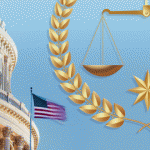He found the vast majority of medical schools in the U.S. were not up to the task of educating doctors. In his report, he proposed five major reforms, based on the model created by William Osler at Johns Hopkins:10
- Expand the prerequisites for medical training to include the basic sciences;
- Revise classroom instruction to emphasize the application of the scientific method to the life sciences;
- Provide access to medical wards, where students could learn, under supervision, from patients;
- Create a full-time medical faculty dedicated to research and teaching; and
- Strengthen state regulation of medical licensure.
If William Osler was the father of modern medicine, then Abraham Flexner was its midwife.11 The impact of the Flexner Report on American medical education cannot be overstated. In the years following its publication, over half the medical schools in North America closed. The American Osteopathic Association introduced curricular changes in osteopathic medical schools that made the doctor of medicine (MD) and doctor of osteopathic medicine (DO) degrees nearly interchangeable. The Flexner Report struck the death knell for Thomsonianism and other forms of alternative medicine in U.S. medical schools.
The Flexner Report had a dark side that needs to be acknowledged. Underlying the report was the belief that society would be better off if only the right people became physicians. Only the well-off could afford to complete the prerequisites demanded by Flexner, followed by a doubling in the length of medical school education from two to four years. Similarly, only wealthy institutions had the resources to provide the type of education Flexner insisted was necessary. The Flexnerian model of medical education effectively prevented the hoi polloi from aspiring to become physicians.
More importantly, Flexner was racist.12 He asserted that Black physicians should only be allowed to treat Black patients. The Flexner Report led to the closing of five of
the seven Black medical schools, leaving behind only Howard University College of Medicine and Meharry Medical College. Had those other schools remained open, an additional 35,000 Black physicians might have joined our ranks.13
Flexner & State Licensure
The lesser-discussed consequence of the Flexner Report was divorcing medical education from certification to practice. Prior to the Flexner Report, medical schools conferred both the medical degree and the right to practice medicine. Post-Flexner, medical schools provided only confirmation that a given student had completed an appropriate course of study to become a physician. The right to practice medicine was conferred by the state.14



